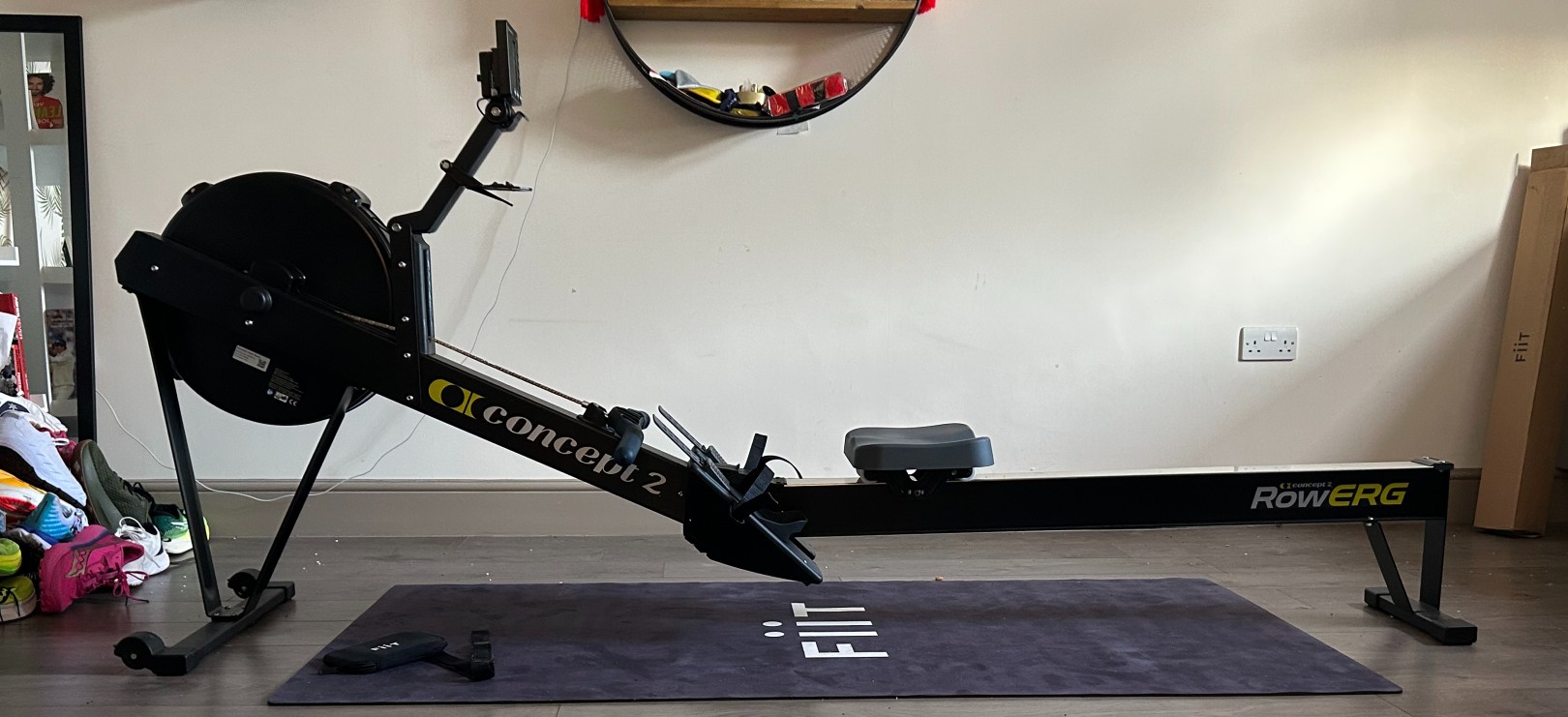Our Verdict
The Concept2 RowErg is a great indoor rower. It’s easy to set up, feels built to last and offers a surprisingly good mix of built-in workout modes. Plus, it pairs with a number of rowing workout apps, rather than being locked into one as on other smart rowing machines, to offer some solid smart rowing time as well.
For
- Easy to assemble
- Well built
- Connects to Fiit app
Against
- LCD screen feels a bit dated
- Occasional connectivity issues using apps
You can trust Coach
The Concept2 RowErg is the rowing machine you’ll find in most gyms. It’s what many Olympians and elite rowers use to train indoors, and it’s found at or near the top of every selection of the best rowing machines out there (including ours). It’s been around since 2003 and may be better known as the Model D, its name at launch (there was also the Model E with taller legs, which had a 20in (51cm) high seat versus the standard 14in (35.5cm). In 2021 Concept2 renamed it the RowErg, offering two height options, but fundamentally it’s the same machine.
The RowErg uses air resistance to recreate the feel of rowing on water, whereby the harder you row the more resistance you have to overcome, and there’s a damper setting so you can adjust the drag, giving a lighter or heavier feel to the stroke.
Although it’s not traditionally treated as a smart rower, the RowErg can also connect to host of apps via Bluetooth, including Concept2’s own ERGData app, Kinomap, up-and-coming platform Asensei and, since October 2022, Fiit – one of the best workout apps, if not the best.
With Hydrow leading the charge of the smart rowing machines, and Peloton and others following after, does the added app support help the Concept2 RowErg keep its nose in front?
Concept2 RowErg: Price And Availability
The standard 14in RowErg tested in this review costs $990 in the US and £990 in the UK. The 20in version is $1,155/£1,155.
It’s available direct from Concept2 and from a range of third-party retailers including Amazon. There’s little point waiting to see if the RowErg will be reduced in annual sales such as Black Friday – it hasn’t in all the years Coach has been covering sales.
While it’s not Concept2’s most expensive rower (that honour goes to the Dynamic Indoor Rower), at just shy of four figures it’s at the more expensive end of the market. It’s similar in price to water rowers and in the mid-range price bracket for smart rowing machines, which begins at $799/£799 for the ProForm 750R and goes up to $2,495/£1,995 for the original Hydrow, by way of $999/£749 for the Echelon Smart Rower and $1,495/£1,395 for the Hydrow Wave.
The Set-Up
Given its reputation as the most robust indoor rower, I assumed the RowErg would be tricky to put together, but my expectations couldn’t have been further from the truth.
The RowErg is delivered in one box and it’s a package that was nowhere near as challenging to get into my flat as rowers from Hydrow or the cheaper, albeit bulkier, ProForm 750R.
Open the box and you’ll find the RowErg split into two parts: the flywheel and monorail. All you need to do is connect the two, and with both screws and screwdriver included, I was able to set it up by myself in 15 minutes.
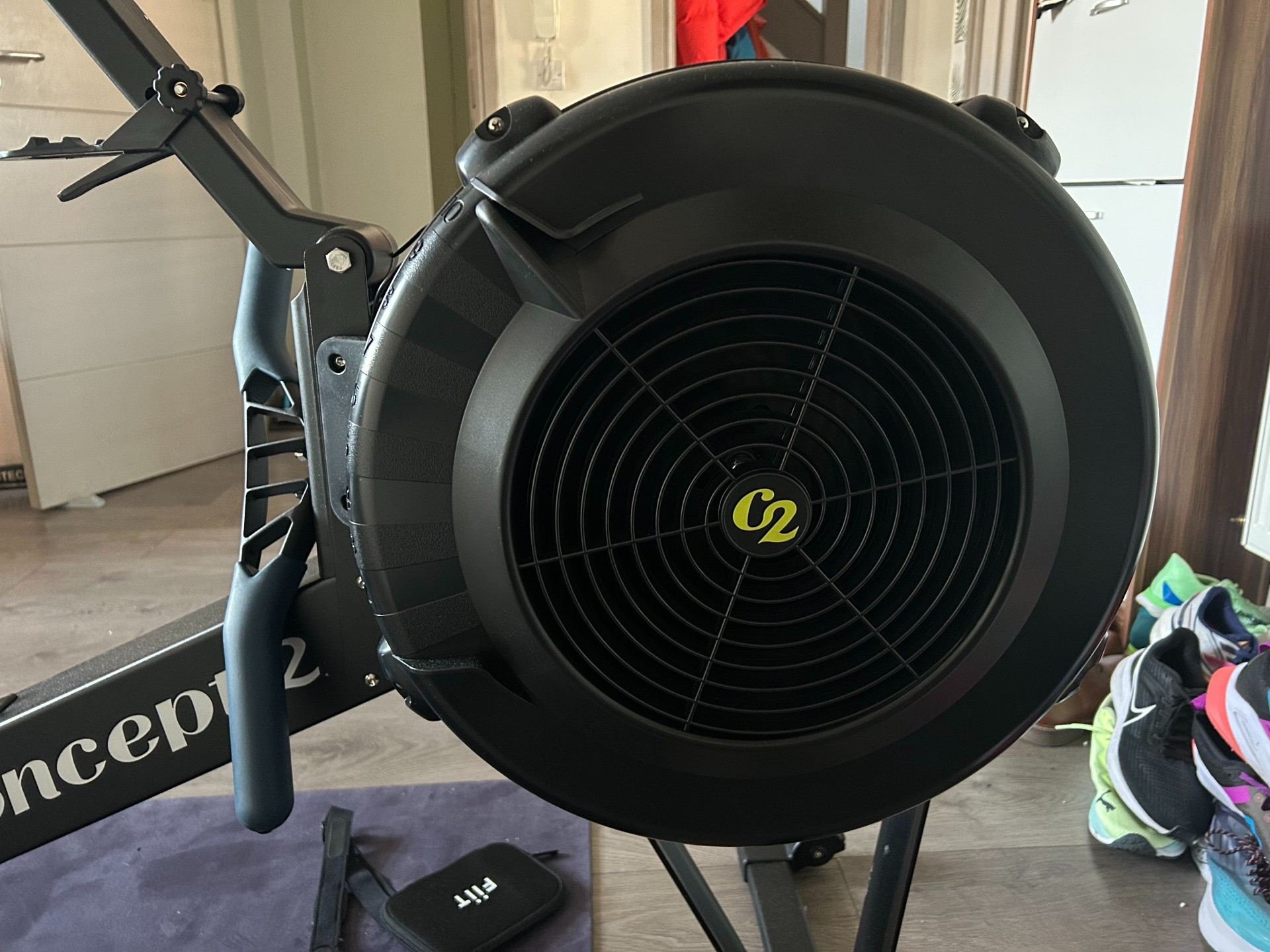
It helps that it’s a relatively light machine – 26kg compared with the 66kg the original Hydrow weighs. It’s heavy enough to feel sturdy and grounded, but easy enough to manoeuvre when tipped onto the wheels mounted at the front of the machine.
The RowErg is 95in (2.44m) long and the monorail measures 54in (1.37m). It dominates a room so think carefully about where it can live. You can separate the rower in two again and store the monorail upright, but it’s not convenient as a rowing machine that folds.
Once you’ve got it in place, pick up and pull the handle to wake up the PM5 monitor and you’re off.
How I Tested The Concept2 RowErg
I rowed 40km on the RowErg, testing both the built-in workout modes on the PM5 monitor and the connected workouts on Fiit.
I have reviewed seven indoor rowing machines for Coach, both of the connected and non-connected variety, including the Hydrow, Hydrow Wave, Echelon Smart Rower, ProForm 750R, DKN H20ar Water Rower, JTX Freedom Air and budget rowers like the Bluefin Fitness Blade 2.0, so have a wide range of experience to compare the performance of the RowErg against.
The Experience
For starters, this just feels like a really well-built rower. It might not be the sleekest-looking but you can tell it’s built to withstand regular rigorous use. The monorail is big, the footrests hold my feet firmly in place during workouts and the seat offers the right balance between firm enough to transfer power and soft enough to row for long periods. I didn’t love the basic-looking device holder, but it does the job of holding a smartphone or tablet in place.
As mentioned, there’s a more expensive version with taller legs, which makes it a little easier to get on and off the rower. I’m 5ft 5in (1.66m) and getting on and off the rower hasn’t been an issue, so to me it seems like a lot of money to pay for that extra height. If you’re unsure, see if you can get a free trial pass to a local gym that has them.
While the air resistance certainly isn’t as quiet as a rower which uses magnetic resistance, it doesn’t make as much racket as I thought it would even when working at a high intensity. Put it this way, someone watching TV in the next room isn’t going to be disturbed by the noise of it.
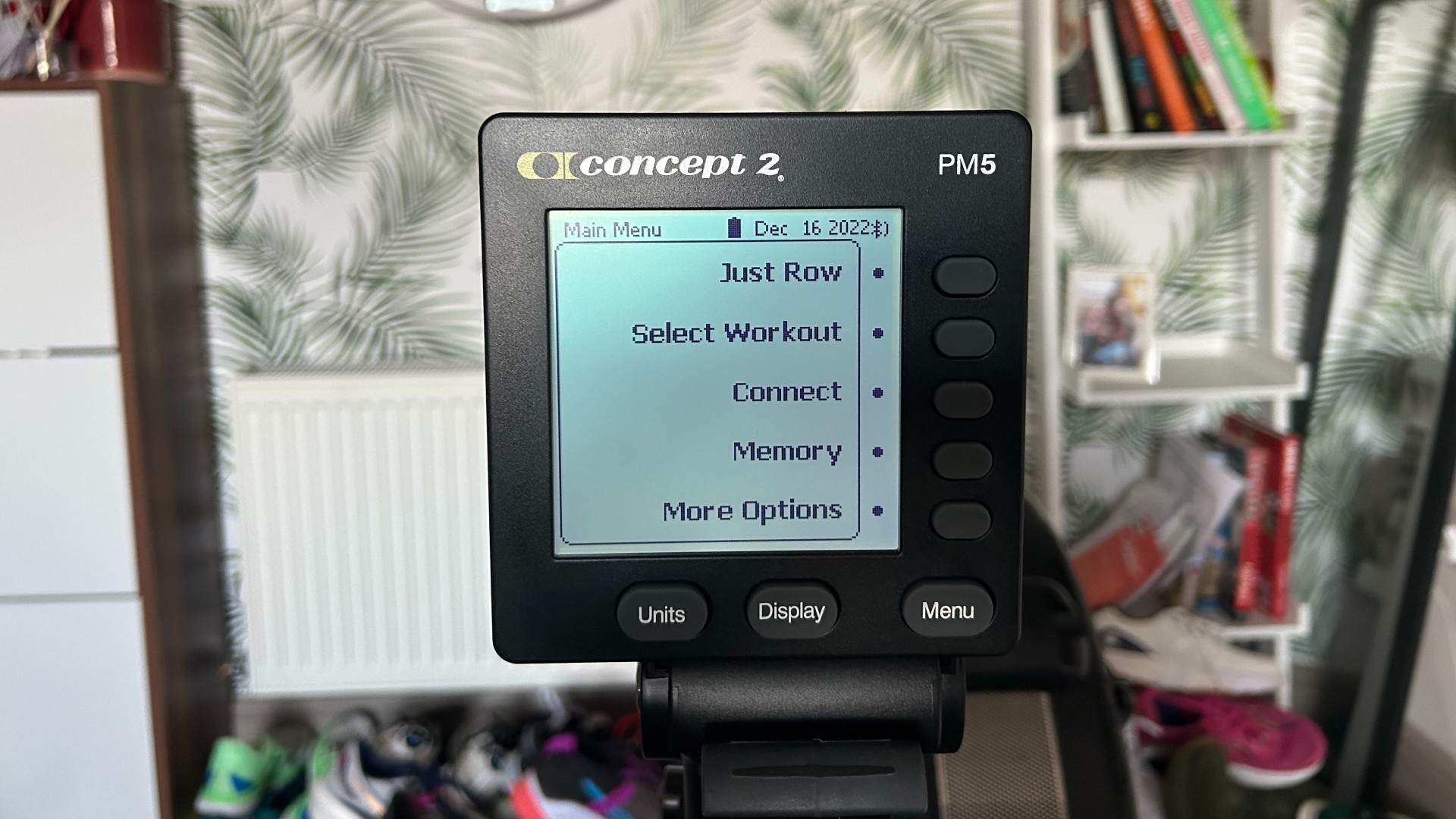
The RowErg’s PM5 backlit display is easy to read and it has all the essential stats such as strokes per minute, pace per 500m and power. I’ve used Concept2 rowing machines a fair bit at the gym, so using the RowErg wasn’t an entirely new experience, but I was surprised by the range of modes available without syncing it with a rowing app. There’s a standard list of workouts by distance or duration, and the ability to build your own custom workouts; less standard is the Paceboat mode, which offers a clear onscreen indicator that you’re keeping to a target pace. There’s also a wireless race mode here to race against other rowers. There are games, too, which provide a fun element: you can fish, or play darts, with variables (like your stroke rate) used to control your player and score points.
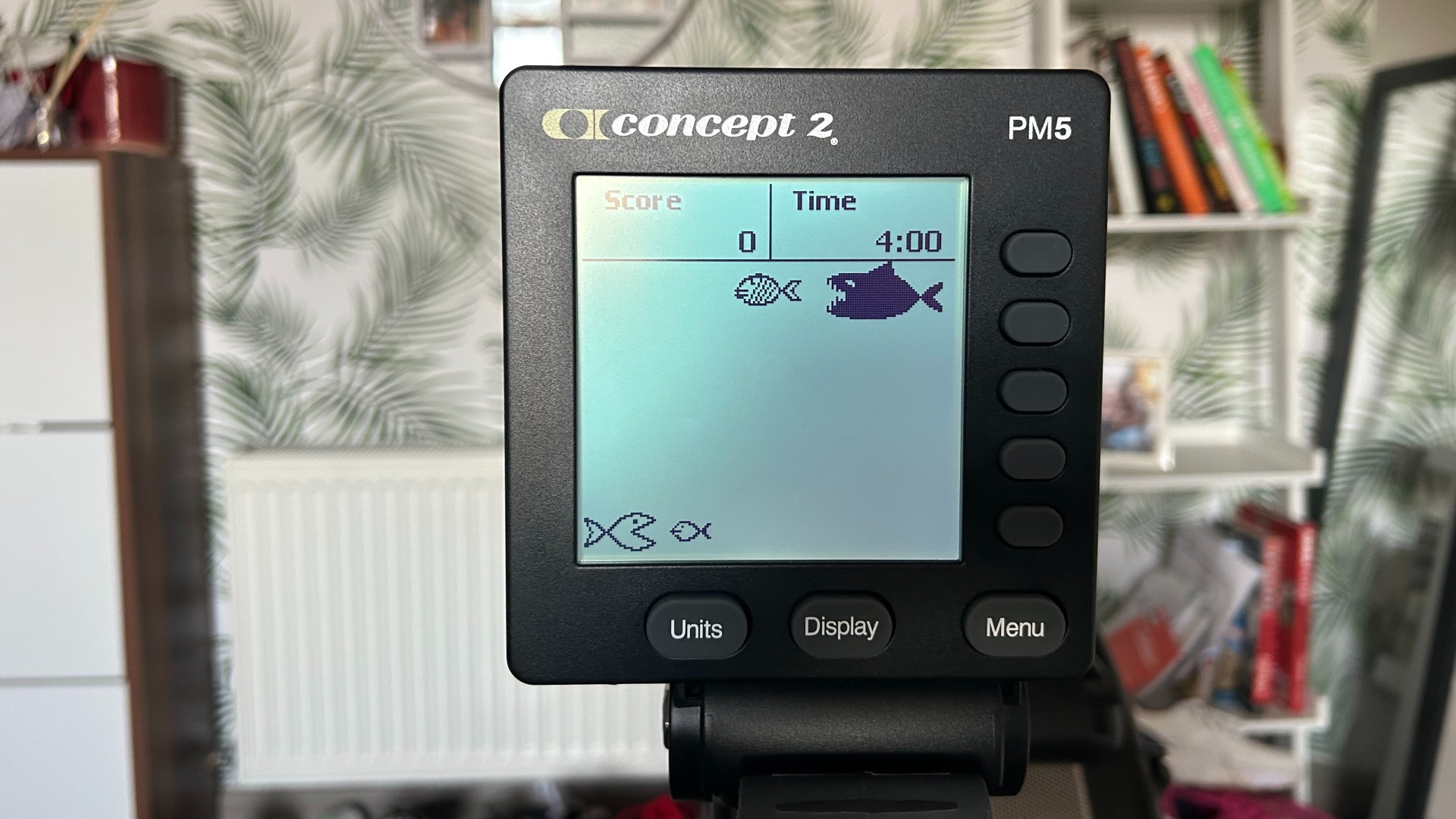
I found myself using the custom workouts along with the free rowing mode, but there’s more scope to vary your training than I had appreciated.
The other side of the RowErg I had not tried before is the connected element. It has built-in support for both ANT+ and Bluetooth, so you’ll be able to pair external heart rate monitors and sports watches to more accurately measure your effort levels or transfer the rowing data to your watch for an enhanced log of your training. I had no problems pairing up a Garmin HRM-Pro Plus chest strap or a Garmin Epix 2.
More interestingly, there’s the ability to connect to a range of third-party apps. Most smart rowing machines are closed platforms, so you’re locked into the manufacturer’s app – which in the case of Hydrow costs $38/£38 a month.
Concept2’s own ErgData app is free, but feels like an extension of the PM5 monitor. You can tackle single distance, time or calorie workouts, or tackle intervals, and a challenges mode will be added at some point. It’s a simple app, but well designed at least and offers a more vibrant display.
I also spent time using Fiit, a great fitness app, which has now added an array of rowing workouts that connect with the RowErg. Unlike ErgData, Fiit requires a subscription of $19.99/£19.99 a month to use, less if you pay for a year up front.
Fiit’s offering is unique, however, offering both dedicated rowing sessions and workouts that mix periods on the rower with exercises using your bodyweight or free weights. There are currently just under 20 rowing classes available and you can also enlist in a two-week row academy designed (for any level) to get to grips with rowing. There are four workouts per week and the workout duration doesn’t go above 25 minutes.
Beyond the academy, Fiit takes a no-nonsense approach that focuses on the fitness element of rowing as opposed to technique. It does help you get to grips with technique at the beginning of classes, but it wants to quickly get you into working hard.
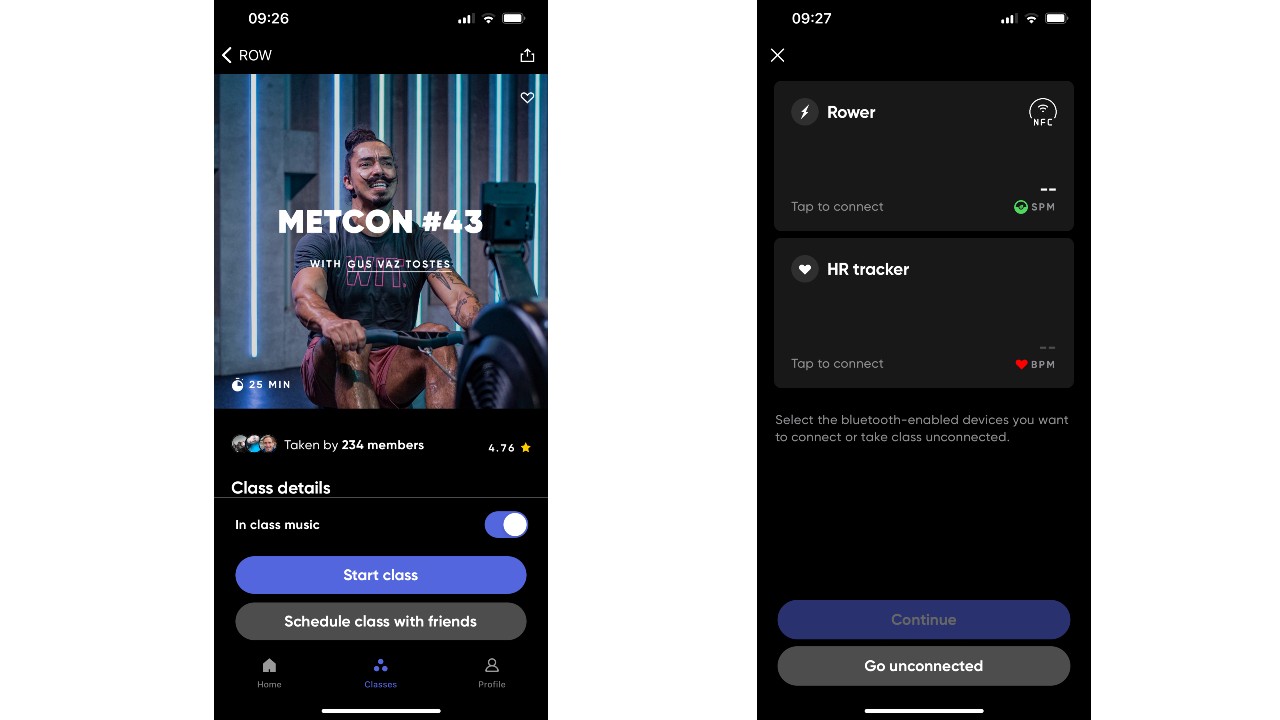
Once you’ve picked a class, you’ll need to pair a heart rate monitor and the rower to make sure you can display real-time data like strokes per minute and speed. It was straightforward to pair dedicated heart rate monitors and sports watches to the app, but I did have some connectivity issues with the rower every now and then, which meant I ended up without the rowing-specific data at the end of a few workouts. It wasn’t clear if that was an app and phone issue or an onboard Bluetooth connectivity issue, but things weren’t flawless.
When it did work – and it did work on most occasions – the metrics on display are easy to absorb and you have a clear indication of what you need to do during the workout even if you somehow missed some instructions from the trainer. Like Fiit’s non-rowing classes, the classes are well designed and push you hard.
One thing missing on the row-only workouts is the accumulation of Fiit points, which are based on hitting specific heart rate zones for cardio classes. Unless you’re doing the more mixed rowing and weight-based classes, you’re not going to see many Fiit points amassed on your screen, which is a pity for Fiit devotees.
The addition of Fiit to what’s on offer to Concept2 owners is a big development and on the whole it works well, plus there are other apps to explore too. It’s not as slick an experience as with Hydrow, but there’s scope to make it much more polished.
Is the Concept2 RowErg Worth It?
There’s a reason the RowErg is the rowing machine you find inside most gyms. Its rugged, durable construction means you can be confident it can handle as much rowing as your body can (and that it holds its value well), it doesn’t weigh an absolute ton, and it’s very easy to use.
Crucially, it’s satisfying to use whether you’re new to indoor rowing or already au fait with SPM metrics and splits. The connected workouts are a bonus, but you have to provide the screen, as with Echelon, and it doesn’t feel as slick as dedicated smart rowers.
It’s certainly not cheap, but if you value a tried-and-tested rowing machine that will let you push yourself as hard as you can, this is undeniably the best and you can rest assured that you get what you pay for.

Mike is an experienced journalist, beginning his career in 2008, and is a keen runner and swimmer. As a contributor to Coach, he covers swimming and reviews rowing machines.
